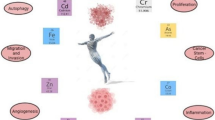Abstract
Objectives: To assess the exposure to toxic metals and to evaluate its possible association with essential elements and socioeconomic status in children from the town of Bytom in the Katowice area; this area is one of the most polluted industrialized regions in Poland. Methods: Concentrations of lead, cadmium, mercury, selenium, magnesium, copper, and zinc were determined in whole blood of 211 children aged 9 years. The samples were analyzed using inductively coupled plasma mass spectrometry (ICP-MS). Information on socioeconomic factors was collected using questionnaires. Concentrations of trace elements in the blood of 24 Swedish children aged 9–10 years were used for comparisons. Results: The concentrations of lead detected in the blood of the Polish children ranged from 0.09 to 1.9 μmol/l, with the median value being 0.27 μmol/l. Statistically significant associations were found between lead and such socioeconomic factors as the number of siblings, trips outside the region, maternal smoking, playing outdoors, and apartment standard. The average blood lead level was about 3 times higher in the Polish children than in the Swedish group. The median blood concentration of cadmium found in the Polish children was 3.4 nmol/l (range 1.1–41 nmol/l; almost 3 times higher than that detected in the Swedish children), and that of mercury was 3 nmol/l (range 0.5–11 nmol/l). The median blood levels and ranges of the essential elements were 1.1 (0.7–2.0) μmol/l for selenium, 1.5 (1.2–1.9) mmol/l for magnesium, 17 (13–22) μmol/l for copper, and 78 (54–104) μmol/l for zinc, respectively. The concentrations of selenium and magnesium were significantly lower in the Polish group as compared with the Swedish children. Conclusions: In all, 7% of the Polish children had blood lead levels exceeding 0.5 μmol/l, the concentration above which negative effects on mental development have been reported. However, the findings indicate a decrease in lead exposure during recent years among the Bytom children.
Similar content being viewed by others
Author information
Authors and Affiliations
Additional information
Received: 26 June 1997 / Accepted: 28 August 1997
Rights and permissions
About this article
Cite this article
Osman, K., Zejda, J., Schütz, A. et al. Exposure to lead and other metals in children from Katowice district, Poland. Int Arch Occup Environ Health 71, 180–186 (1998). https://doi.org/10.1007/s004200050268
Issue Date:
DOI: https://doi.org/10.1007/s004200050268




